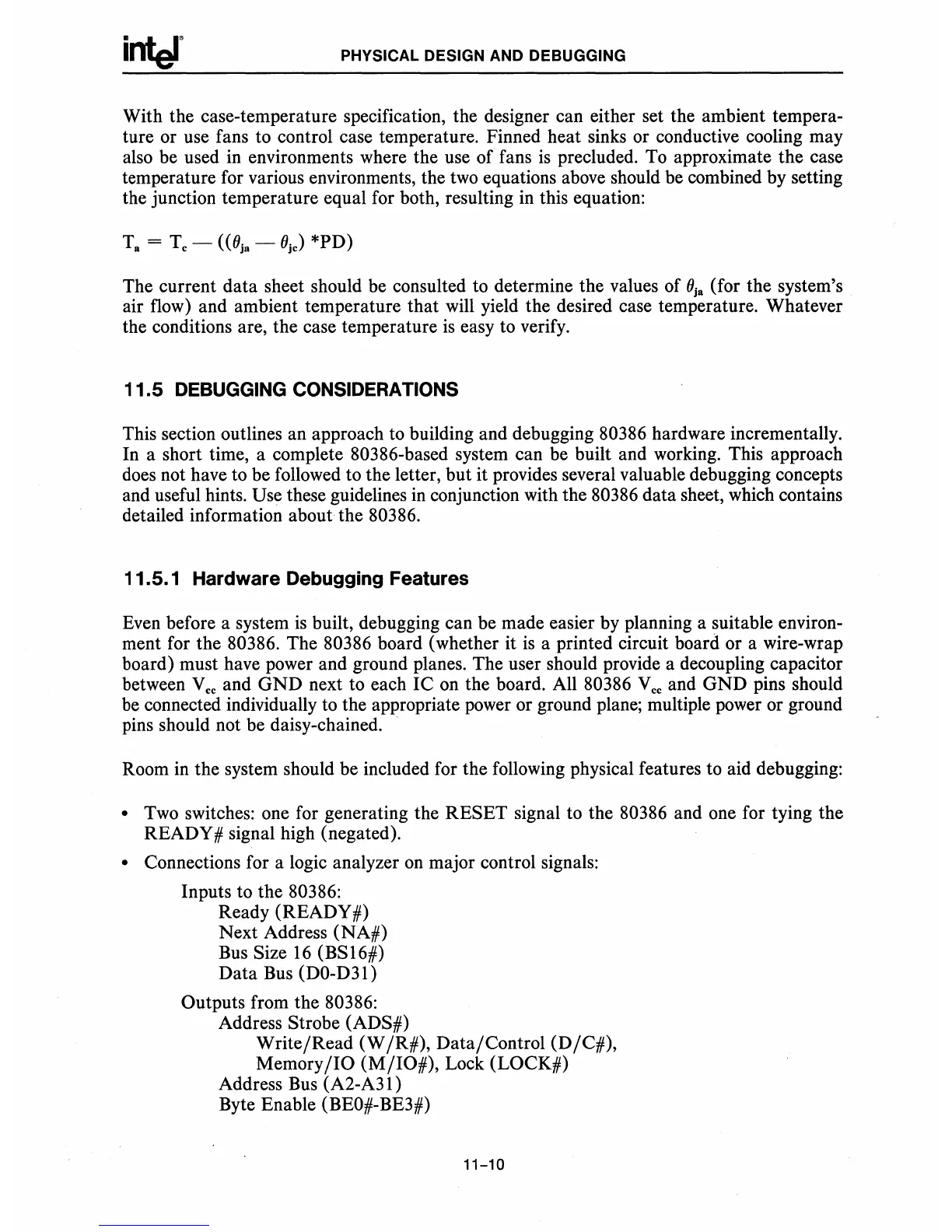PHYSICAL DESIGN AND DEBUGGING
With the case-temperature specification, the designer can either set the ambient tempera-
ture or use fans to control case temperature. Finned heat sinks or conductive cooling may
also be used in environments where the use of fans
is
precluded. To approximate the case
temperature for various environments, the
two
equations
above
should be combined by setting
the junction temperature equal for both, resulting in this equation:
The current data sheet should be consulted to determine the values of
Oja (for the system's
air flow) and ambient temperature that will yield the desired case temperature. Whatever
the conditions are, the case temperature
is
easy to verify.
11.5
DEBUGGING CONSIDERATIONS
This section outlines an approach to building and debugging 80386 hardware incrementally.
In a short time, a complete 80386-based system can be built and working. This approach
does not have to be followed to the letter, but it provides several valuable debugging concepts
and useful hints.
Use these guidelines
in
conjunction with the 80386 data sheet, which contains
detailed information about the
80386.
11.5.1 Hardware Debugging Features
Even before a system
is
built, debugging can be made easier
by
planning a suitable environ-
ment for the
80386. The 80386 board (whether it
is
a printed circuit board or a wire-wrap
board) must have power and ground planes. The user should provide a decoupling capacitor
between
Vee
and
GND
next to each IC on the board. All 80386
Vee
and
GND
pins should
be
connected individually to the appropriate power or ground plane; multiple power or ground
pins should not be daisy-chained.
.
Room
in
the system should be included for the following physical features to aid debugging:
• Two switches: one for generating the RESET signal to the 80386 and one for tying the
READY # signal high (negated).
• Connections for a logic analyzer
on
major control signals:
Inputs to the
80386:
Ready (READY
#)
Next Address (NA#)
Bus Size
16
(BSI6#)
Data Bus (DO-D31)
Outputs from the
80386:
Address Strobe (ADS#)
Write/Read (W
/R#),
Data/Control
(D/C#),
Memory
/10
(M/IO#),
Lock (LOCK#)
Address Bus (A2-A31)
Byte Enable
(BEO#-BE3#)
11-10

